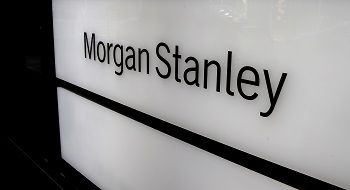Morgan Stanley priced its debut bond referencing the Secured Overnight Financing Rate (SOFR) on Wednesday with a new structure the bank hopes will help set a precedent for the fledgling market and improve on prior deals.
The US bank priced the US$750m three-year non call two year bond at SOFR plus 83bp.
Morgan Stanley is the fifth US bank to use the new reference rate, which will replace Libor in 2021. Wells Fargo, JP Morgan, Citi and, most recently, Goldman Sachs have all referenced SOFR in bond transactions since it was introduced last year.
The structure of the new Morgan Stanley note differs from its predecessors in how and when it calculates interest payments.
Like Goldman, Morgan Stanley used a compounding interest rate, which the Federal Reserve’s Alternative Reference Rates Committee (ARRC) considers more accurate than simple average interest rates used on Libor referenced notes.
This is a change ARRC has been pushing and Goldman Sachs was the first to make the leap in May with its US$1bn two-year non call one-year floater that priced at SOFR plus 60bp.
Yet while issuers are largely satisfied with the new SOFR rate, they still face difficulties calculating quarterly interest payments on a rate that changes daily.
Banks have been exploring different solutions to this problem.
Earlier issuers opted to use a two-day lockout or suspension period each quarter for the days leading up to the due day.
Goldman amended this approach by calculating each day’s interest payments using the SOFR rate from two days prior, such that there never had to be a suspension period.
And, on Wednesday, Morgan Stanley offered a new option.
It will pay interest two days after the end of the 90-day period, except for the very last interest payment, which will use a two-day look-back that assumes the SOFR rate stays the same for those two days.
A source close to the trade said Morgan Stanley’s structure is closest to how the derivatives market is structured, which should allow investors to more easily swap the notes between fixed and floating.
“This is about what is the right way to do this, not what is the easiest, and trying to develop a standard that can be used by other issuers if they try to tap the SOFR market,” the source said.
Even so, Morgan Stanley only drew US$1.1bn in demand for the US$750m trade, which was similar to the low demand Citi received earlier this year on its US$1bn debut that garnered a US$1.3bn order book.
In contrast, Goldman Sachs upsized its debut deal as order books swelled to US$2.25bn.
“I find the structure a bit weird,” said one banker about the Morgan Stanley trade.
“Payment could be problematic for select investors, but it is better than the suspension period [incorporated by banks such as JP Morgan, Citi and Wells Fargo] as it incorporates all rates in the period.”
